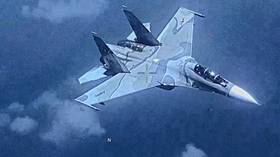The Milky Way went cannibal and absorbed another galaxy when it was young

A stunning new image has revealed that our Milky Way had something of a sinister side in its youth as it gobbled up a smaller dwarf galaxy 10 billion years ago.
Scientists from the Instituto de Astrofísica de Canarias (IAC) have created a new cosmic picture of the Milky Way galaxy which shows its origins, before it gobbled up another smaller galaxy called Gaia-Enceladus after the two galaxies collided.
Although scientists knew that the galaxies had merged before now, the timeline of the collision and its aftermath was debated. Thanks to recent accurate stellar age data gathered by the European Space Agency’s Gaia spacecraft mission, the team was able to create a color magnitude diagram showing the age distribution of stars in the current disk and inner halo of the Milky Way, allowing them to identify when the merger took place.
“Together with state-of-the-art cosmological simulations of galaxy formation, these robust ages allow us to order the early sequence of events that shaped our Galaxy,” the study published in Nature Astronomy explains.
The team tracked how different stars moved and looked at the difference in their chemical make-ups. They then identified two different groups of Milky Way stars, a red group, with a higher concentration of metals, and a blue group, with lower metal concentration, both groups contained stars that were the same age. They determined that the blue group must have belonged to Gaia-Enceladus.
Also on rt.com This strange galaxy is defying the universe to travel towards the Milky Way (PHOTO)Both galaxies appeared about 13 billion years ago and collided 3 billion years later, in a process that took millions of years and saw Gaia-Enceladus be absorbed into the Milky Way. The process caused the stars in the young Milky Way to heat up and form a stellar halo. Gas fell towards the center, creating a disk shape, which continued to form stars. Around 6 or 8 billion years ago, the gas settled into a thin disk that continues to form stars.
“We can measure these effects much more accurately in the Milky Way than in external galaxies, and this will provide many new insights on the physical mechanisms that play a role in the evolution of galaxies,”said lead researcher Carme Gallart.
Like this story? Share it with a friend!














